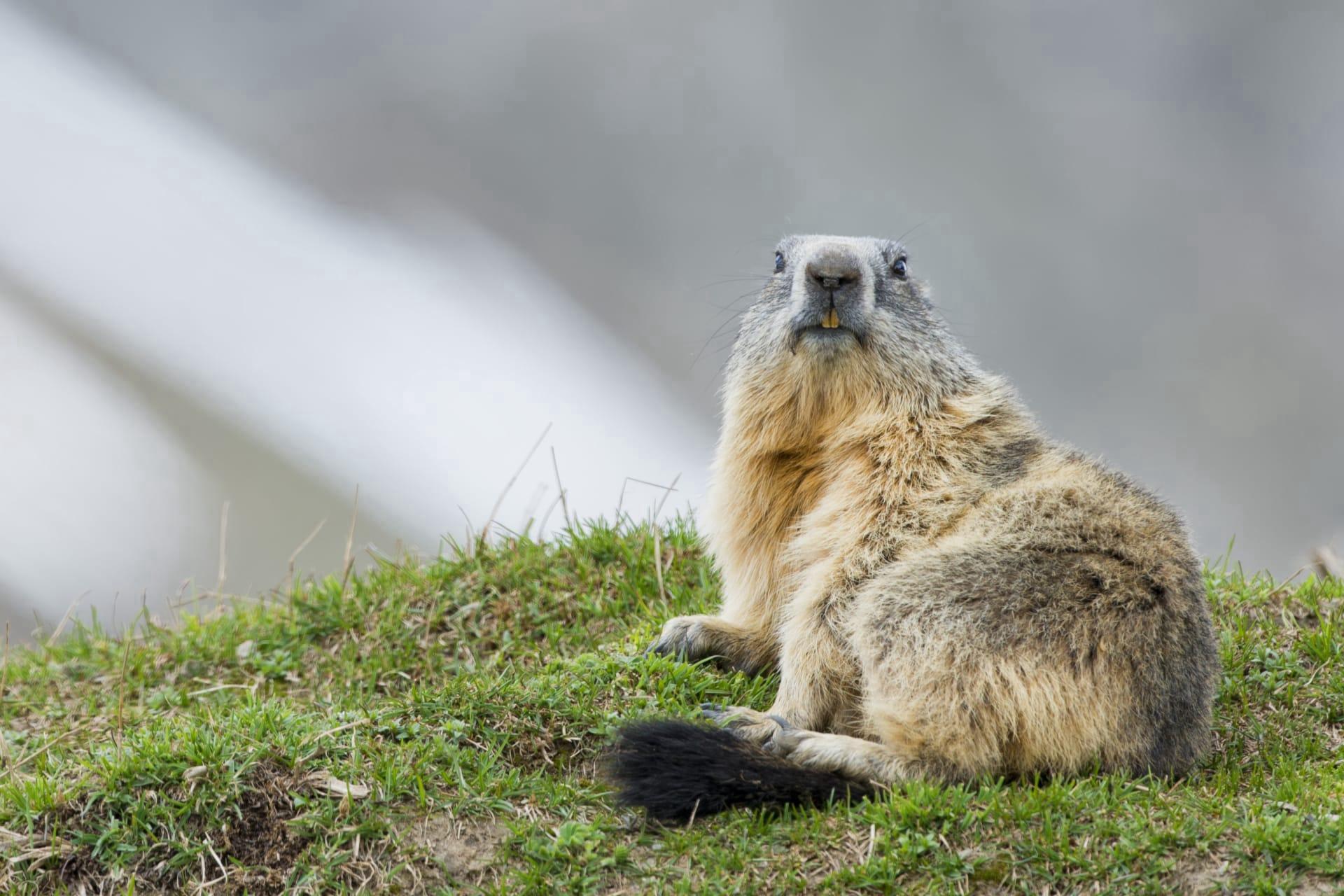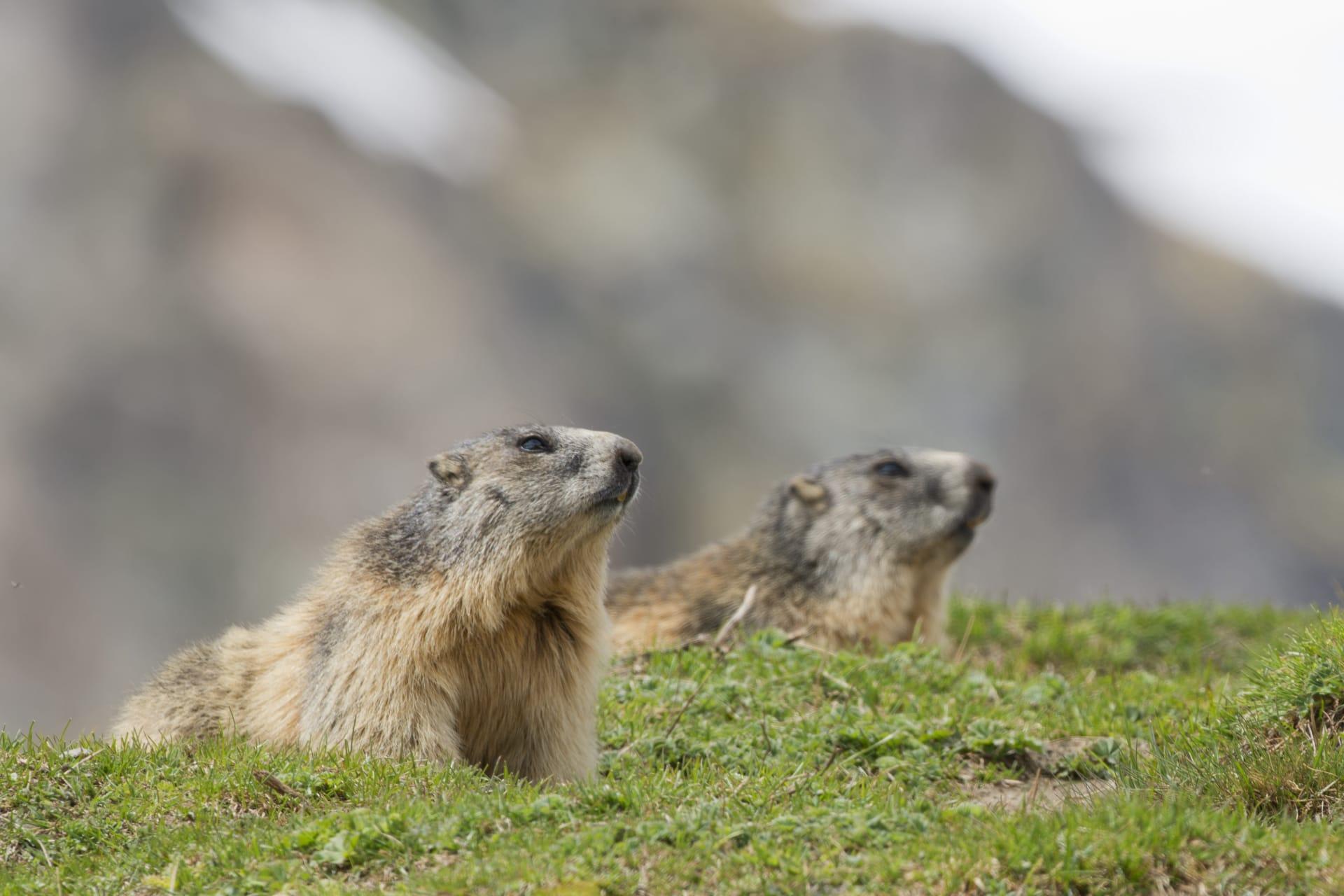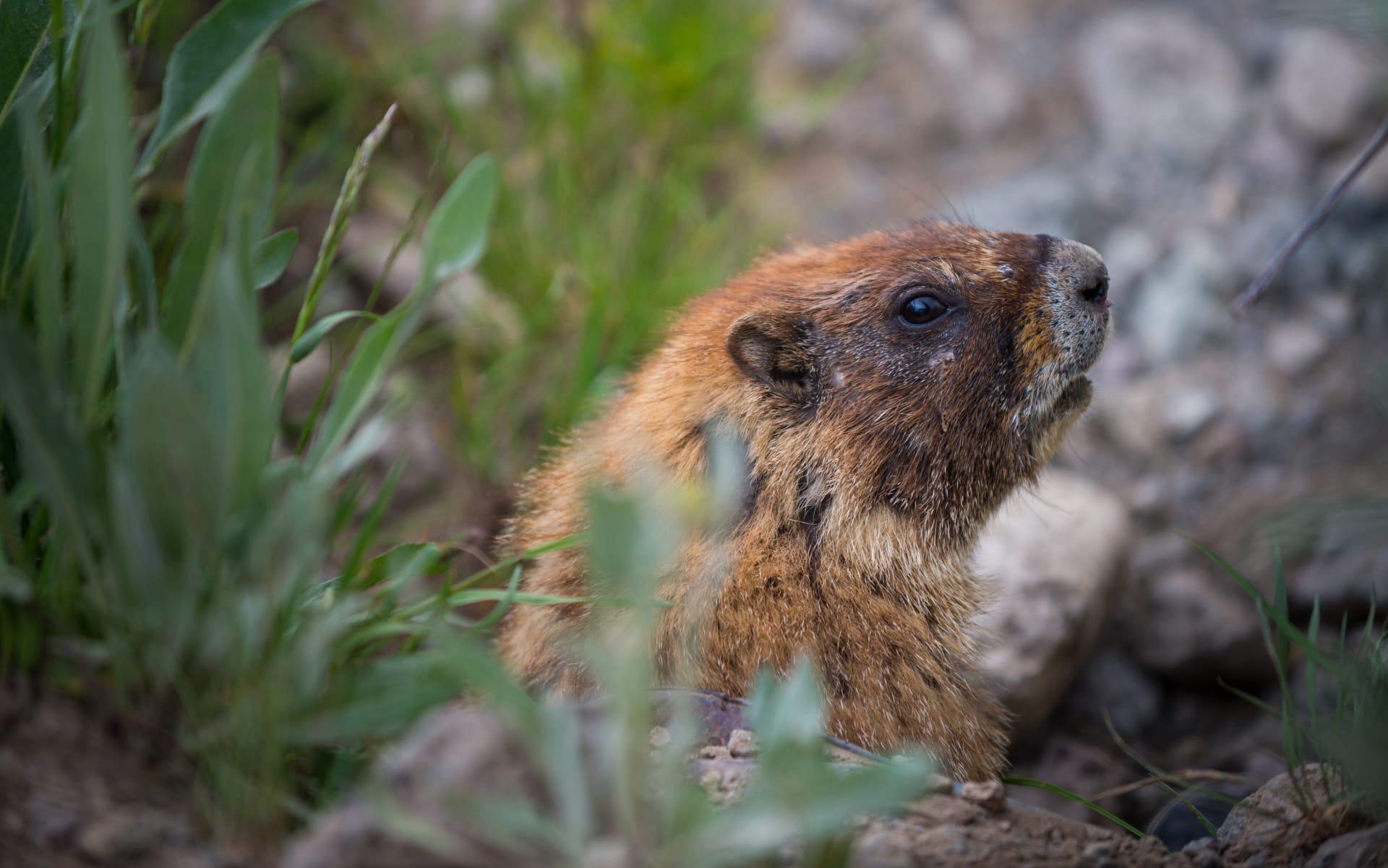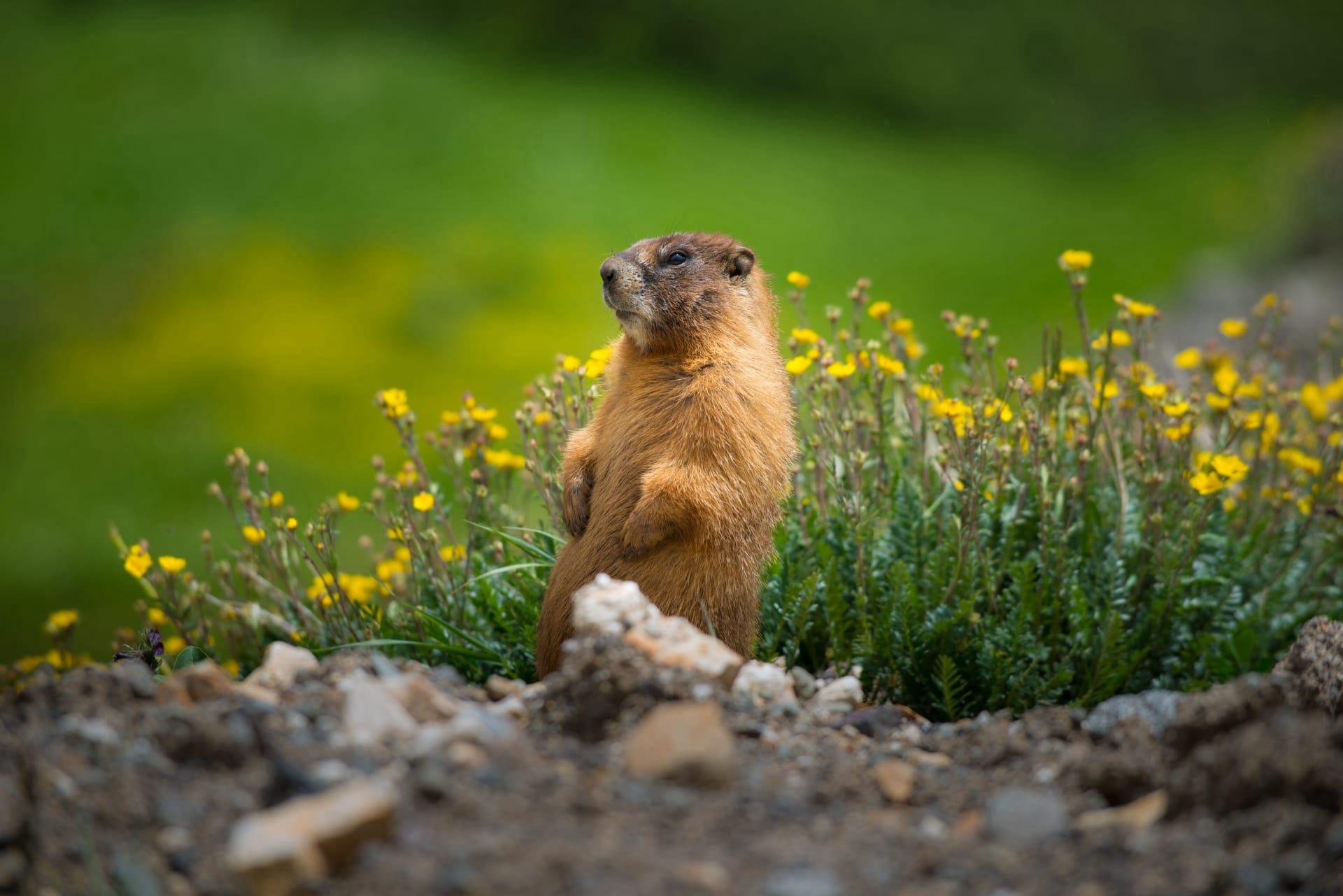1
Yellow-bellied marmots, often spotted in the rocky mountains of western North America, are known for their remarkable hibernation habits. These creatures spend up to 80% of their life in hibernation. That's about 7 to 8 months each year! During this period, their body temperature can drop to just above freezing, and their heart rate plunges from 110 beats per minute to a mere 4-5 beats. This incredible adaptation allows them to survive in harsh winter conditions with limited food resources.
Their social structure is another intriguing aspect. Yellow-bellied marmots are surprisingly social for solitary foraging animals. They live in colonies that can consist of up to 20 individuals. Each colony has a dominant male, several females, and their young. The dominant male fiercely defends his territory and colony members from intruders. These social groups help them in lookout duties against predators and in the maintenance of their burrows, which are complex systems with multiple entrances and escape routes.

2
Did you know that the diet of a yellow-bellied marmot plays a crucial role in its survival? These marmots are herbivores and primarily feed on grasses, flowers, and grains. However, they have a unique strategy to prepare for their long hibernation period. During summer and fall, they consume large quantities of food to build up fat reserves. They can gain up to 50% of their body weight during this time! This stored fat is vital as it provides energy during their months-long hibernation.
Yellow-bellied marmots also have an interesting way of communicating. They use a variety of vocalizations to alert each other of potential dangers. One of the most distinctive sounds they make is a high-pitched whistle, which has earned them the nickname "whistle pig." This whistle is usually a warning signal to other marmots about the presence of predators like eagles, hawks, or canines. The sound can travel long distances, ensuring the message reaches all members of the colony.

3
Yellow-bellied marmots have a unique adaptation to their environment. They are excellent diggers, using their strong claws to create extensive burrow systems. These burrows not only serve as homes but also as protection against predators and extreme weather conditions. An average burrow can be up to 7 meters (23 feet) in length and have several chambers for sleeping, rearing young, and escaping predators. The design of these burrows also varies depending on the soil type and terrain.
Another fascinating fact about these marmots is their impact on their ecosystem. They are considered a keystone species, meaning their presence significantly influences their environment. By burrowing, they help aerate the soil, promoting plant growth. Their activities also create habitats for other small animals and insects. Moreover, they are a crucial food source for predators like foxes, eagles, and bears, playing a vital role in the food chain of their ecosystem.

4
When it comes to reproduction, yellow-bellied marmots have a unique strategy. They breed once a year, usually in the spring just after they emerge from hibernation. The female gives birth to a litter of 3-8 young after a gestation period of about 30 days. These young marmots are born blind and helpless, relying entirely on their mother for warmth and nutrition. It takes them about six weeks to become fully independent, a critical period for their survival in the wild.
These marmots also have a peculiar way of maintaining their fur. They are often seen sunbathing on rocks, which is not just for relaxation. This behavior serves two purposes: firstly, it helps regulate their body temperature, and secondly, it aids in keeping their fur free from parasites. Their thick fur is essential for insulation, especially during the cold months of hibernation, and maintaining its health is crucial for their overall well-being.

5
Yellow-bellied marmots have an exceptional ability to forecast the weather. Studies have shown that they can sense changes in barometric pressure and adjust their behavior accordingly. If a storm is approaching, they are likely to spend more time in their burrows. This keen sense of weather prediction is vital for their survival, especially when it comes to preparing for hibernation and avoiding being caught in adverse weather conditions.
Their lifespan is quite remarkable for rodents. In the wild, yellow-bellied marmots can live up to 15 years, which is significantly longer than many other rodent species. This extended lifespan is attributed to their hibernation habits, which reduce the wear and tear on their bodies and lower the risk of predation. In captivity, with ideal conditions and no predators, they can live even longer, showcasing their resilience and adaptability.